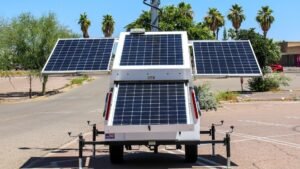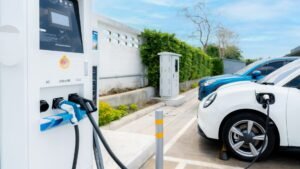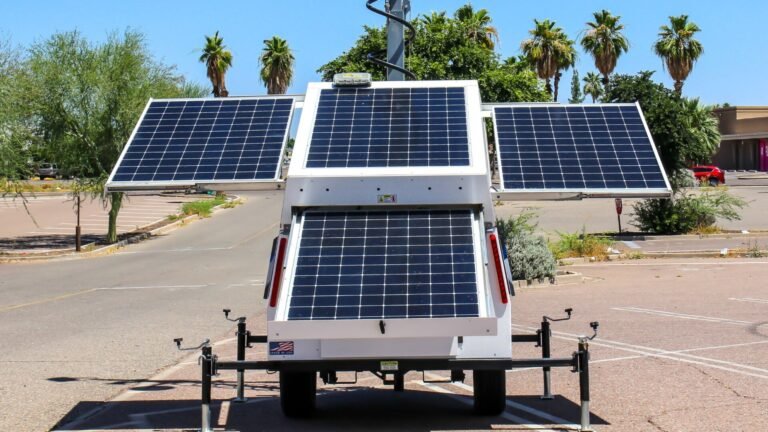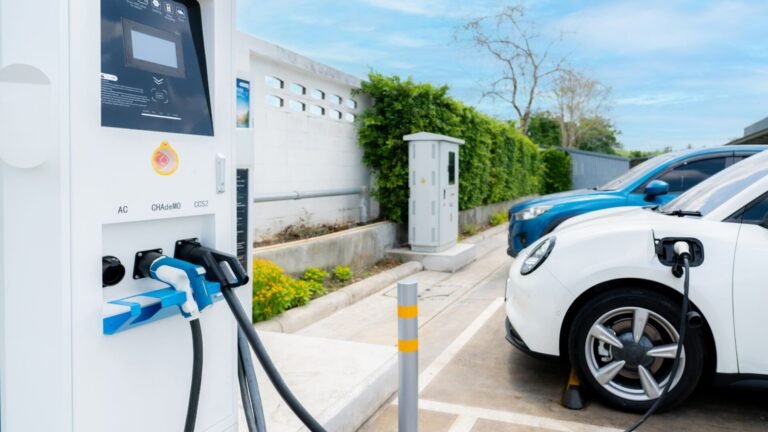The integration of solar energy in schools is rapidly becoming a global trend, with European schools leading the charge.
By harnessing the power of the sun, schools across Europe are reducing their carbon footprints, cutting energy costs, and educating students about renewable energy.
This shift towards sustainable energy solutions is not only an environmental necessity but also an educational opportunity, providing students with hands-on learning experiences in renewable energy technologies.
In this article, we will explore the top 10 solar energy implementations in European schools, showcasing how solar energy is transforming educational institutions.
These examples highlight the innovative ways schools are adopting solar energy to create more sustainable and energy-efficient environments for their students and communities.
1. Germany’s Solar-Powered Schools
Germany is a pioneer in solar energy in schools. Numerous schools have installed solar panels, significantly reducing their reliance on conventional energy sources.
The Berlin Brandenburg International School, for instance, boasts a solar power system that generates a substantial portion of its energy needs.
This initiative not only lowers energy costs but also serves as a practical educational tool for students. The school’s solar power system is integrated into the curriculum, providing students with real-world examples of renewable energy in action.
Additionally, many other schools in Germany, such as the German School of Athens, have followed suit, implementing similar systems to foster a culture of sustainability.
These efforts collectively contribute to Germany’s ambitious renewable energy targets and demonstrate the significant role that educational institutions can play in the energy transition.
2. Solar Schools in Spain
Spain’s sunny climate makes it an ideal location for solar energy projects. Several schools across the country have embraced solar energy, with notable examples such as the Lycée Français de Madrid.
This school has installed an extensive array of solar panels, providing a sustainable energy solution and setting an example for solar schools in Europe.
Beyond the Lycée Français de Madrid, schools like the SEK International School in Barcelona have also adopted solar energy systems, which help reduce operational costs and teach students about the importance of renewable energy.
These schools often organize workshops and educational tours to explain the functioning and benefits of their solar installations, thereby fostering a generation of environmentally conscious individuals.
Spain’s commitment to renewable energy in education not only reduces carbon emissions but also prepares students to tackle future energy challenges.
3. Denmark’s Green School Movement
Denmark is known for its commitment to renewable energy, and its schools are no exception. Many Danish schools have integrated solar energy into their buildings.
The Copenhagen International School, for example, features a unique facade covered with solar panels. This innovative design generates electricity and serves as an educational tool for students to learn about solar energy in schools.
The facade, consisting of over 12,000 solar panels, is not just an energy source but also an architectural marvel.
Other schools, such as the Niels Steensens Gymnasium, have installed rooftop solar panels that contribute significantly to their energy needs.
These projects are often supported by government grants and community initiatives, reflecting Denmark’s strong policy framework for renewable energy.
By incorporating solar energy into school infrastructure, Denmark not only cuts down on energy costs but also instills a sense of environmental stewardship in its students.
4. Solar Energy in French Schools
French schools are increasingly adopting solar energy solutions. The Lycée International de Saint-Germain-en-Laye is a leading example, with its comprehensive solar energy system.
This implementation not only powers the school but also reduces its environmental impact, aligning with France’s broader renewable energy goals.
The school’s solar panels are part of a larger sustainability initiative that includes energy-efficient lighting and waste reduction programs.
Other institutions, such as the École Active Bilingue Jeannine Manuel, have also implemented solar energy systems, demonstrating the feasibility and benefits of renewable energy in educational settings.
These schools often collaborate with local governments and environmental organizations to maximize the impact of their sustainability efforts.
By integrating solar energy into their operations, French schools are not only saving money but also educating students on the importance of sustainable practices.
5. Solar-Powered Schools in the United Kingdom
The United Kingdom is making strides in solar energy in schools, with numerous institutions installing solar panels to offset energy costs.
The Kingsmead School in Enfield is a prime example, with its extensive solar panel installation that significantly reduces the school’s electricity bills and carbon footprint.
The school’s solar project is part of a broader initiative to promote environmental education, including recycling programs and green building practices.
Other schools, such as the Queen Elizabeth II High School in the Isle of Man, have also embraced solar energy, demonstrating the widespread appeal and feasibility of these projects.
The UK government supports these initiatives through various grants and funding programs aimed at promoting renewable energy in education.
By adopting solar energy, schools in the UK are not only reducing their operational costs but also providing students with a practical understanding of renewable energy technologies.
6. Italy’s Solar Schools Initiative
Italy has embraced solar energy in schools, with projects such as the solar panel installation at the American Overseas School of Rome.
This initiative has dramatically reduced the school’s energy costs and provides students with hands-on learning opportunities about renewable energy sources.
The school’s solar panels are integrated into the science curriculum, allowing students to monitor energy production and learn about the technical aspects of solar power.
Other schools, such as the International School of Milan, have also implemented solar energy systems, highlighting the growing trend of renewable energy adoption in Italian education.
These projects are often supported by government incentives and community partnerships, reflecting Italy’s commitment to sustainable development.
By integrating solar energy into their operations, Italian schools are not only cutting costs but also preparing students for a future where renewable energy plays a crucial role.
7. Solar Schools in the Netherlands
The Netherlands is a leader in renewable energy, and its schools are actively participating in this movement.
The International School of Amsterdam has a robust solar energy system that meets a significant portion of its energy needs.
This project highlights the potential of solar energy in schools to contribute to a sustainable future. The school’s solar panels are part of a larger sustainability initiative that includes energy-efficient buildings and waste reduction programs.
Other institutions, such as the United World College Maastricht, have also adopted solar energy systems, demonstrating the widespread appeal and feasibility of these projects.
These initiatives are often supported by government grants and community partnerships, reflecting the Netherlands’ strong policy framework for renewable energy.
By adopting solar energy, Dutch schools are not only reducing their operational costs but also providing students with a practical understanding of renewable energy technologies.
8. Switzerland’s Solar Education Programs
Swiss schools are integrating solar energy into their operations and curricula. The Zurich International School has implemented a solar power system that supplies a large percentage of the school’s energy needs.
This initiative supports the school’s commitment to sustainability and provides a practical learning environment for students.
The school’s solar panels are part of a larger sustainability initiative that includes energy-efficient lighting and waste reduction programs.
Other institutions, such as the International School of Lausanne, have also implemented solar energy systems, demonstrating the feasibility and benefits of renewable energy in educational settings.
These projects are often supported by government incentives and community partnerships, reflecting Switzerland’s commitment to sustainable development.
By integrating solar energy into their operations, Swiss schools are not only saving money but also educating students on the importance of sustainable practices.
9. Sweden’s Solar-Powered Schools
Sweden’s focus on renewable energy extends to its educational institutions. The International School of the Stockholm Region has installed solar panels to reduce its energy costs and carbon emissions.
This project exemplifies the benefits of solar energy in schools and contributes to Sweden’s overall renewable energy targets.
The school’s solar panels are part of a larger sustainability initiative that includes energy-efficient lighting and waste reduction programs.
Other institutions, such as the Stockholm International School, have also implemented solar energy systems, demonstrating the widespread appeal and feasibility of these projects.
These initiatives are often supported by government grants and community partnerships, reflecting Sweden’s strong policy framework for renewable energy.
By adopting solar energy, Swedish schools are not only reducing their operational costs but also providing students with a practical understanding of renewable energy technologies.
10. Solar Energy in Austrian Schools
Austria is another country where solar energy in schools is gaining traction. The Vienna International School has implemented a solar power system that not only supplies energy but also serves as an educational tool for students.
This project underscores the importance of renewable energy in the educational sector and promotes sustainability.
The school’s solar panels are part of a larger sustainability initiative that includes energy-efficient lighting and waste reduction programs.
Other institutions, such as the American International School Vienna, have also implemented solar energy systems, demonstrating the feasibility and benefits of renewable energy in educational settings.
These projects are often supported by government incentives and community partnerships, reflecting Austria’s commitment to sustainable development.
By integrating solar energy into their operations, Austrian schools are not only saving money but also educating students on the importance of sustainable practices.
Benefits of Solar Energy in Schools
Implementing solar energy in schools offers numerous benefits, including:
- Reduced Energy Costs: Schools can significantly lower their electricity bills by generating their own power from solar panels.
- Environmental Impact: Solar energy reduces carbon emissions, contributing to a cleaner environment.
- Educational Opportunities: Students gain hands-on experience with renewable energy technologies, fostering a greater understanding of sustainability.
- Energy Independence: Schools become less reliant on traditional energy sources, enhancing energy security.
Challenges and Considerations
While the benefits are clear, there are also challenges to implementing solar energy in schools. These include initial installation costs, maintenance, and the need for suitable roof space.
The initial investment in solar panels and associated infrastructure can be substantial, posing a financial barrier for many schools, especially those with limited budgets.
Additionally, regular maintenance is required to ensure the efficiency and longevity of solar panels, which can add to the operational costs over time.
Schools also need to assess the structural integrity and orientation of their roofs to ensure they can support solar installations and maximize sunlight exposure.
Moreover, the integration of solar energy systems requires navigating regulatory frameworks and obtaining necessary permits, which can be complex and time-consuming.
Despite these challenges, many schools overcome these obstacles through various means. Government incentives and grants play a crucial role in offsetting the initial costs, making solar energy projects more accessible.
Schools often partner with solar energy companies that offer flexible financing options, such as power purchase agreements (PPAs) or leasing arrangements, which reduce upfront expenses.
Additionally, community fundraising initiatives and corporate sponsorships can provide additional financial support.
By leveraging these resources and forming strategic partnerships, schools can successfully implement solar energy systems, reaping the long-term benefits of reduced energy costs and environmental impact.
Conclusion
The integration of solar energy in schools is a vital step towards a sustainable future. European schools are leading the way, demonstrating the feasibility and benefits of solar power in educational institutions.
From Germany to Austria, solar energy in schools is reducing costs, lowering carbon footprints, and educating the next generation about renewable energy.
At Tamesol, we are committed to supporting schools in their journey towards sustainability. Our high-quality solar panels and expert installation services are designed to help educational institutions harness the power of the sun.
By partnering with Tamesol, schools can achieve their energy goals and contribute to a greener future.






